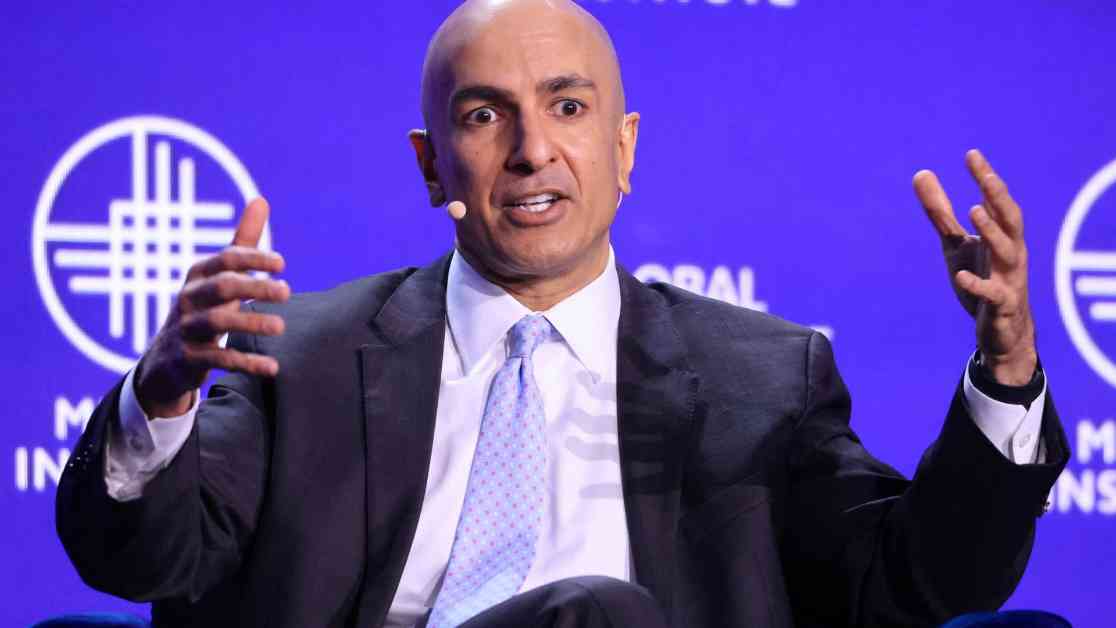Minneapolis Fed’s Kashkari Anticipates Lower Interest Rates in the Near Future
Minneapolis Federal Reserve President Neel Kashkari recently made headlines when he shared his predictions for lower interest rates in the upcoming months. Speaking on CNBC, Kashkari expressed his optimism regarding the economy and hinted at potential rate cuts if current trends persist.
Kashkari’s confidence stems from his belief that inflation will continue to decline towards the Fed’s target rate of 2%. This positive outlook is supported by the latest nonfarm payrolls report, which indicates a robust labor market performance.
“Our primary objectives are maximum employment and stable prices. If we observe a favorable trend in inflation alongside a strong labor market, I would be inclined to support further easing,” Kashkari remarked during his appearance on “Squawk Box.” He emphasized the need to adjust interest rates accordingly based on economic indicators.
In December, headline inflation stood at 2.6% annually, slightly exceeding the Fed’s target rate. Core inflation, excluding volatile food and energy prices, was slightly higher at 2.8%. Despite these figures, Kashkari remains optimistic, anticipating a gradual decline in housing-related costs like rents that would help realign prices with the target rate.
While Kashkari’s stance reflects a positive outlook, his colleagues have raised concerns about the potential impact of fiscal policies on inflation. President Donald Trump’s aggressive tariff measures against major trading partners have sparked worries about a potential trade war that could reignite inflation.
Addressing these concerns, Kashkari highlighted the importance of monitoring global economic developments and the responses of other countries to U.S. policies. He stressed the need for a comprehensive understanding of the implications of trade negotiations to mitigate potential risks to inflation.
Looking ahead, the market consensus suggests that the Fed will maintain its current stance until at least June. Following multiple rate cuts in 2024, the central bank opted to keep its benchmark borrowing rate steady during its meeting in late January.
Kashkari, who is not a voting member of the rate-setting Federal Open Market Committee this year but will have a vote in 2026, reiterated the importance of gathering more information before making significant policy decisions. He highlighted the need to assess factors such as trade tensions, immigration policies, and tax reforms to make informed choices.
In conclusion, while the economic landscape presents certain challenges and uncertainties, Kashkari’s insights offer a glimpse into the Fed’s cautious approach towards monetary policy. By balancing economic indicators, global developments, and domestic policies, the central bank aims to navigate potential risks and steer the economy towards stability and growth. As Kashkari and his colleagues continue to monitor key factors influencing monetary decisions, their commitment to achieving the Fed’s objectives remains unwavering.
In a nutshell, Kashkari’s assessment of the economic landscape reflects a balanced approach that prioritizes data-driven decision-making and a proactive stance towards addressing potential risks. By emphasizing the importance of flexibility and vigilance in monetary policy, Kashkari underscores the Fed’s commitment to ensuring a stable and prosperous economic environment.














